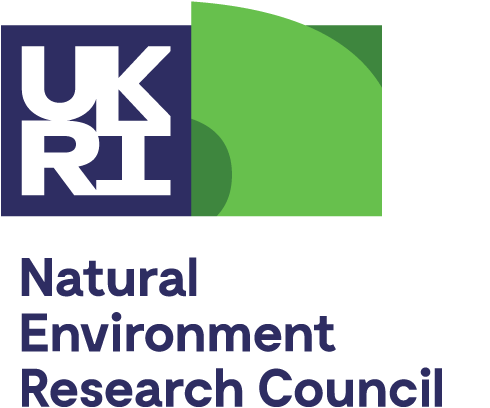Reconnaissance Trip to Madagascar 2015
Between the 15th and the 30th of November, Eva Marquis, Martin Smith and Guillaume Estrade from the University of Brighton and Kathryn Goodenough from the BGS undertook a reconnaissance field trip to Madagascar with the aims of securing access to, and collecting samples from, REE-mineralised alkaline complexes and associated ion-adsorption deposits of the Ampasindava Peninsula. Our objectives, as part of work package 2, were to gain a better understanding of how ion-adsorption deposits form where REE-mineralised bedrock has undergone tropical weathering. However, prior to leaving for Madagascar it was uncertain if we would be able to access the Ampasindava peninsula’s alkaline complexes, let alone know what samples we would be able to collect.
On arrival in Madagascar, the first 3 days were spent in the Malagasy capital Antananarivo, where we busily prepared for our expedition north and met the various people who would be assisting us during the two weeks. Rocky Lowell and Fetra Rasolonirina were our local guides, who Kathryn knew from her 2006 and 2007 field seasons in the PGRM (Projet de Gouvernance des Ressources Minérales) mapping program of Madagascar. Their help and knowledge of the field area proved invaluable to the success of this trip. We visited the managers of the mining exploration company Tantalus Rare Earth, Dominique Rakotomanana and Montaharison Rakotoandriana. They kindly gave us access to their core store and allowed us use of their fantastic field camp facilities on the Ambohimirahavavy prospect. We also met Ms Soatsitohaina Rakotovao (Tsito), a professor of the University of Antananarivo, who assisted us with the administrative procedures required to obtain the permits for exporting samples. Finally, we met Bernard Moine, a retired researcher of the University of Toulouse who was one of the leaders of the PGRM project, and who helped us track down the samples previously collected during the PGRM.
On Wednesday 18th, food, water and sampling equipment were packed into our two 4x4s and we set off to the northwest of Madagascar. It took us a day and a half to drive the 860 km to our first destination, Ambanja, where the Tantalus Rare Earth laboratory and core store are based. On Thursday 19th, we arrived in Ambanja where we were met by the Tantalus geologists who took us to look at the core from the Ambohimirahavavy prospect. The most representative cores, which would give us the best overview of the lithologies in the prospect, were selected for logging and sampling. These cores provided us with an unrivalled view of the transition from pedolith and saprolith into the bedrock. Over two days we were able to log and sample in detail several comprehensive sections through both mineralised and unmineralised regolith profiles into bedrock, which will hopefully provide us with a fantastic data set that will greatly aid the understanding of the processes involved in ion-adsorption deposit formation.
Friday 20th, we began our trip into the jungle to the Ambohimirahavavy alkaline complex. A newly made access road to the basecamp gave us a spectacular section through the regolith next to the complex. The primary rock fabric of the altered bedrock is easily distinguished in the saprolith. We identified and sampled several dykes and the overlying pedolith. In addition, close to the basecamp, in the Betaimboay village, we sampled in detail a complete regolith profile overlying the main syenitic ring-dyke of the complex.
4 days were spent in the field, hiking and sampling most of the lithologies previously identified by Guillaume Estrade during his PhD. The recent slash-and-burn, carried out by the local population to cultivate the rice, enabled us to discover new outcrops and boulder fields of poorly known nepheline syenite, porphyritic trachyte and tuff breccia in the caldera and along the ring-dyke. Surprisingly, we also found fresh cores left in the caldera from the drilling of a water well that supplies the basecamp. Our return to Ambanja was delayed for a few hours by heavy rainfall that made the camp access road impassable. We finally made it back Ambanja with a good collection of samples, where the geologists of Tantalus Rare Earth helped us to sort out the initial permitting for transport of the samples to the UK. Nearly 100 kg of samples were collected, an excellent result in view of the short time spent in the field.
We arrived back in Antananarivo late on Tuesday 24th. We had scheduled two days for sorting out the permits to ship our samples to the UK, as Malagasy administration is a labyrinth in which you can easily lose a lot of time. Luckily, the wonderful Tsito, Rocky and Fetra guided us successfully through this labyrinth and on Friday 27th the samples were sent to UK, where their arrival is eagerly awaited! For SoS RARE colleagues, a full sample list will soon be available on SharePoint.
Before leaving, we met with the vice president of the University of Antananarivo and agreed a collaboration with Tsito for our next trip, for which we are planning an expedition to the barely studied Manongarivo alkaline complex in summer 2016.
Guillaume Estrade and Eva Marquis 05 December 2015









